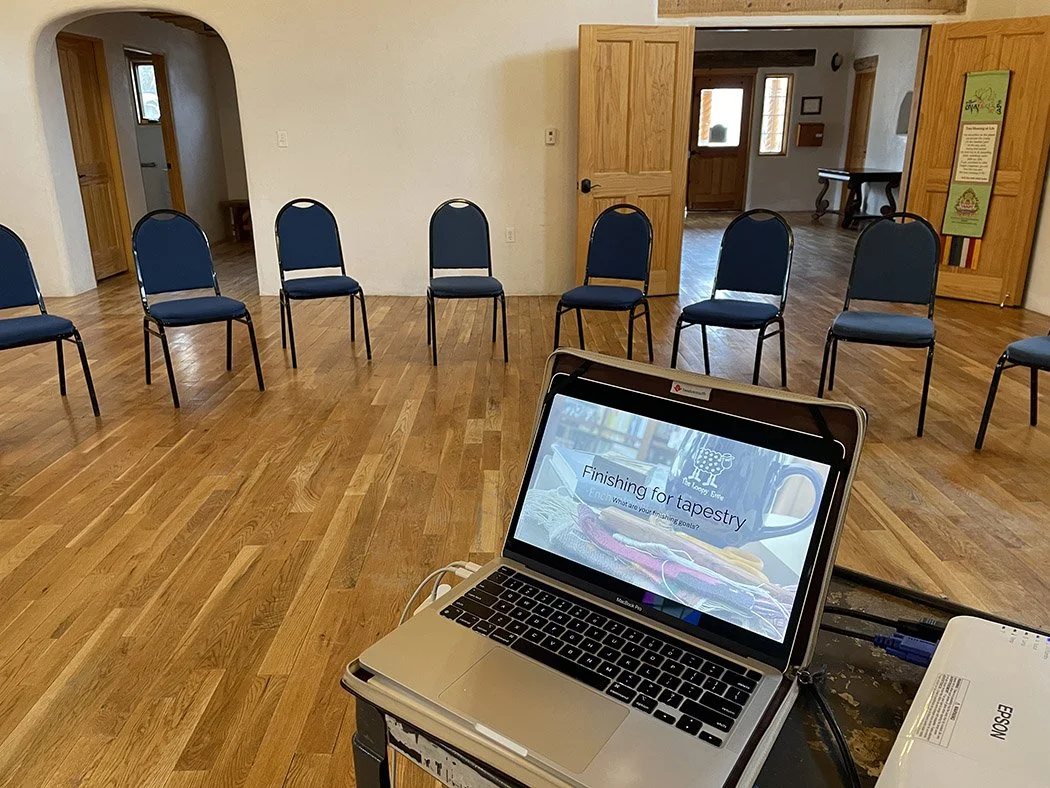I taught two retreats in Taos in close succession this fall. It is always good to be in Taos and the retreat I have in November is a group that comes back every year. I’m always so grateful for this group of weavers that have become friends over the years. It is important to find friends who are tapestry weavers if you can whether that be online or people you can actually meet in person.
Getting to Taos in the winter is usually fairly easy, and this day was no exception. Going home there was a snowstorm and I didn’t get to enjoy this view looking toward Chama from Highway 64.







